How much poison is on your Christmas tree? Mercury glass tree topper: 207 ppm Lead + 462 ppm Arsenic. Don’t break it!
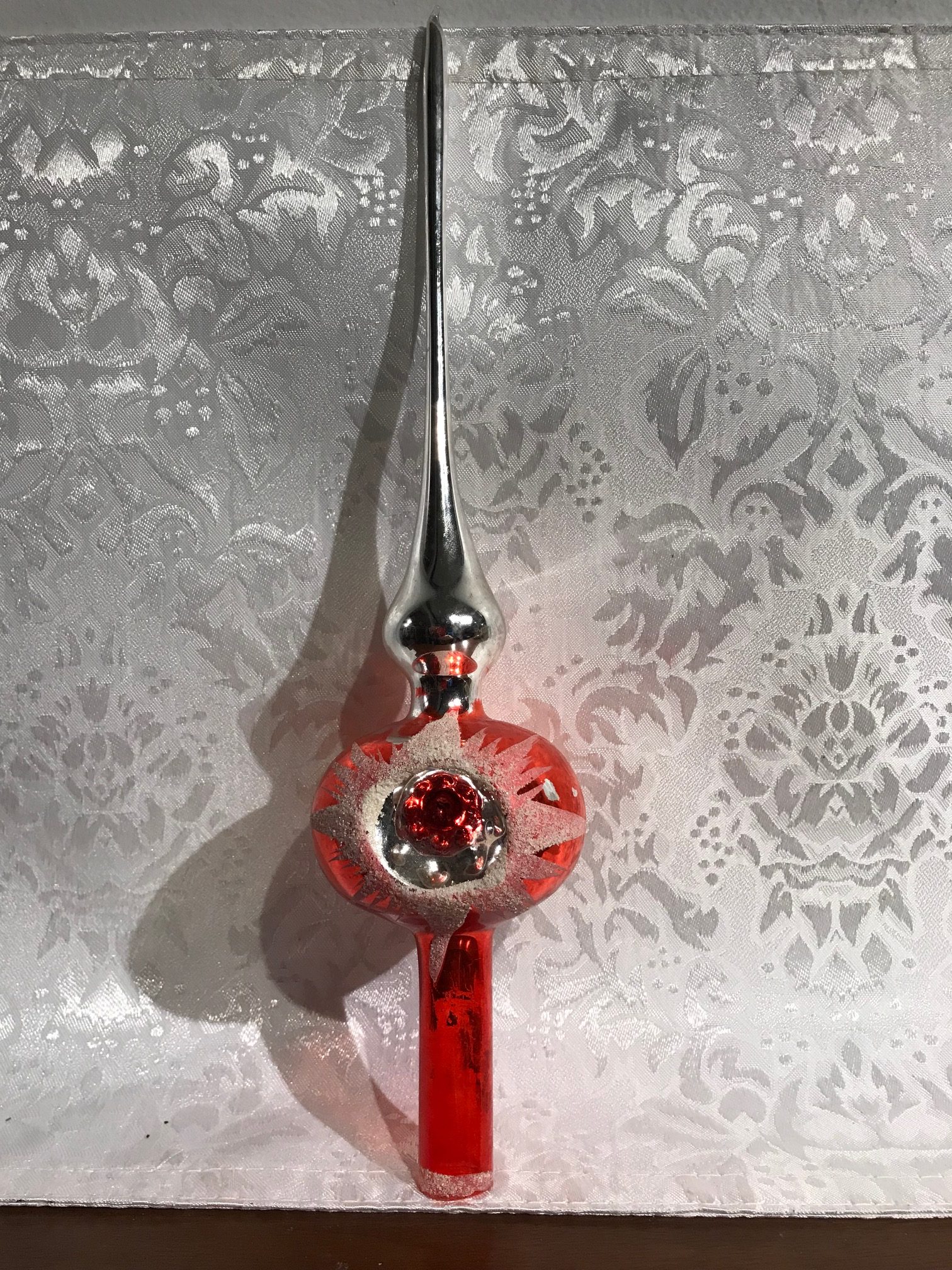
For those new to this website:
Tamara Rubin is a multiple-federal-award-winning independent advocate for childhood Lead poisoning prevention and consumer goods safety, and a documentary filmmaker. She is also a mother of Lead-poisoned children (two of her sons were acutely Lead-poisoned in 2005). Since 2009, Tamara has been using XRF technology (a scientific method used by the U.S. Consumer Product Safety Commission) to test consumer goods for toxicants (specifically heavy metals — including Lead, Cadmium, Mercury, Antimony, and Arsenic). Tamara’s work was featured in Consumer Reports Magazine in February 2023 (March 2023 print edition).
When tested with an XRF instrument, this vintage “mercury glass” Christmas tree topper had the following readings. (Note: Dude! I was so disappointed that there was not actually any MERCURY in this thing — that would have been very interesting!)
Silver bulb component of ornament:
- Lead (Pb): 32 +/- 11 ppm
- Cadmium (Cd): Negative / Non-Detect
- Mercury (Hg): Negative / Non-Detect
- Arsenic (As): 462 +/- 23 ppm
- Barium (Ba): 45,500 +/- 800 ppm
- Chromium (Cr): 599 +/- 180 ppm
- Antimony (Sb): Negative / Non-Detect
- Selenium (Se): Negative / Non-Detect
- Iron (Fe): 590 +/- 88 ppm
- Bismuth (Bi): 27 +/- 14 ppm
Continue reading below the image:
Red bulb component of ornament image above:
- Lead (Pb): 207 +/- 78 ppm
- Barium (Ba): 20,800 +/- 2,400 ppm
- Bromine (Br): 75 +/- 29 ppm
- Zinc (Zn): 272 +/- 128 ppm
- Copper (Cu): 716 +/- 299 ppm
- Iron (Fe): 6,133 +/- 1,196 ppm
- Vanadium (V): 35,100 +/- 3,200 ppm
- Titanium (Ti): 71,600 +/- 6,800 ppm
- Silver (Ag): 9,085 +/- 911 ppm
- Molybdenum (Mo): 1,754 +/- 202 ppm
- Nb: 2,231 +/- 199 ppm
- Manganese (Mn): 6,424 +/- 1,826ppm
Continue reading below the image:
 Frosted white component of ornament image above:
Frosted white component of ornament image above:
- Lead (Pb): 64 +/- 16 ppm
- Arsenic (As): 355 +/- 24 ppm
- Barium (Ba): 26,700 +/- 600 ppm
- Chromium (Cr): 517 +/- 194 ppm
- Zinc (Zn): 240 +/- 32 ppm
- Nickel (Ni): 57 +/- 35 ppm
- Iron (Fe): 1,288 +/- 126 ppm
- Bismuth (Bi): 25 +/- 15 ppm
- Titanium (Ti): 5,091 +/- 872 ppm
Test results reported on LeadSafeMama.com are accurate, science-based, and replicable. Testing was done for a minimum of 60-seconds per component, and repeated multiple times to confirm the results. Each set of results found was similar to the results sets noted above. If a metal is not listed for any component, it was not detected in that component using the XRF in “Consumer Goods” mode, which tests any metals down to single-digit parts per million.
How much Lead is unsafe?
Christmas ornaments are not regulated at all currently (and vintage ones never were) — because they are not manufactured or marketed as “items intended for use by children” (they are in fact, generally considered to be “home decor,” which is a wholly unregulated category of consumer goods!). For some reference, the amount of Lead that is considered unsafe and illegal in an item that is expressly manufactured and sold as something to be used by children is anything 90 ppm Lead or higher in the paint, glaze, or coating, and anything 100 ppm Lead or higher in the substrate. Given this came in at 207 ppm Lead, it would not be considered safe for a child to “play with” or “use” (from a Lead-perspective) … AND THEN THERE’S THE ARSENIC!!!! (Yikes!) Please, if something like this breaks, clean it up with disposable wet wipes — and be as thorough as possible.
Some additional reading:
- To see more Christmas ornaments I have tested, click here.
- To see more vintage glass items I have tested, click here.
As always, please let me know if you have any questions.
Thank you for reading and sharing these results!
Tamara Rubin
#LeadSafeMama
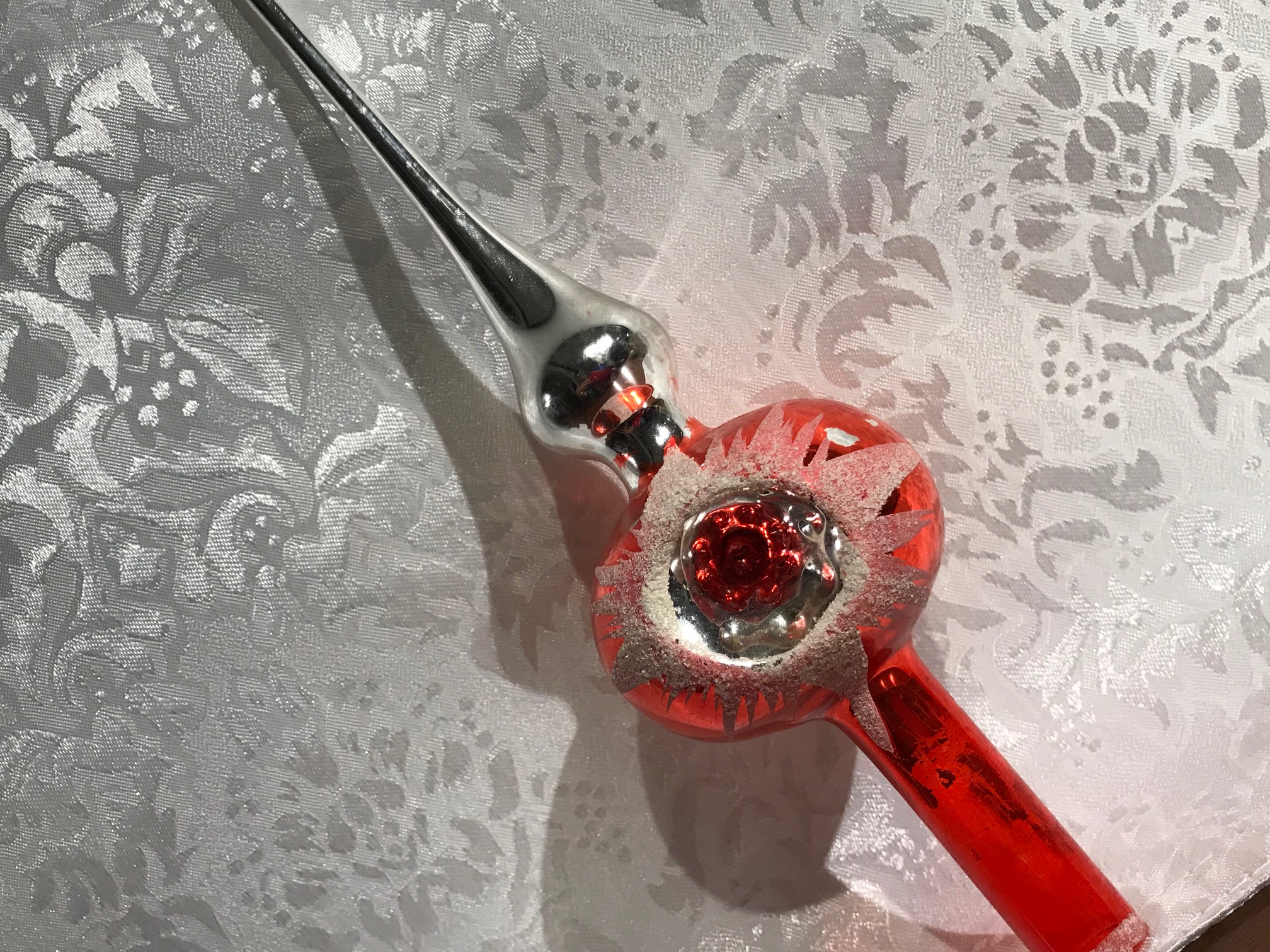
Never Miss an Important Article Again!
Join our Email List








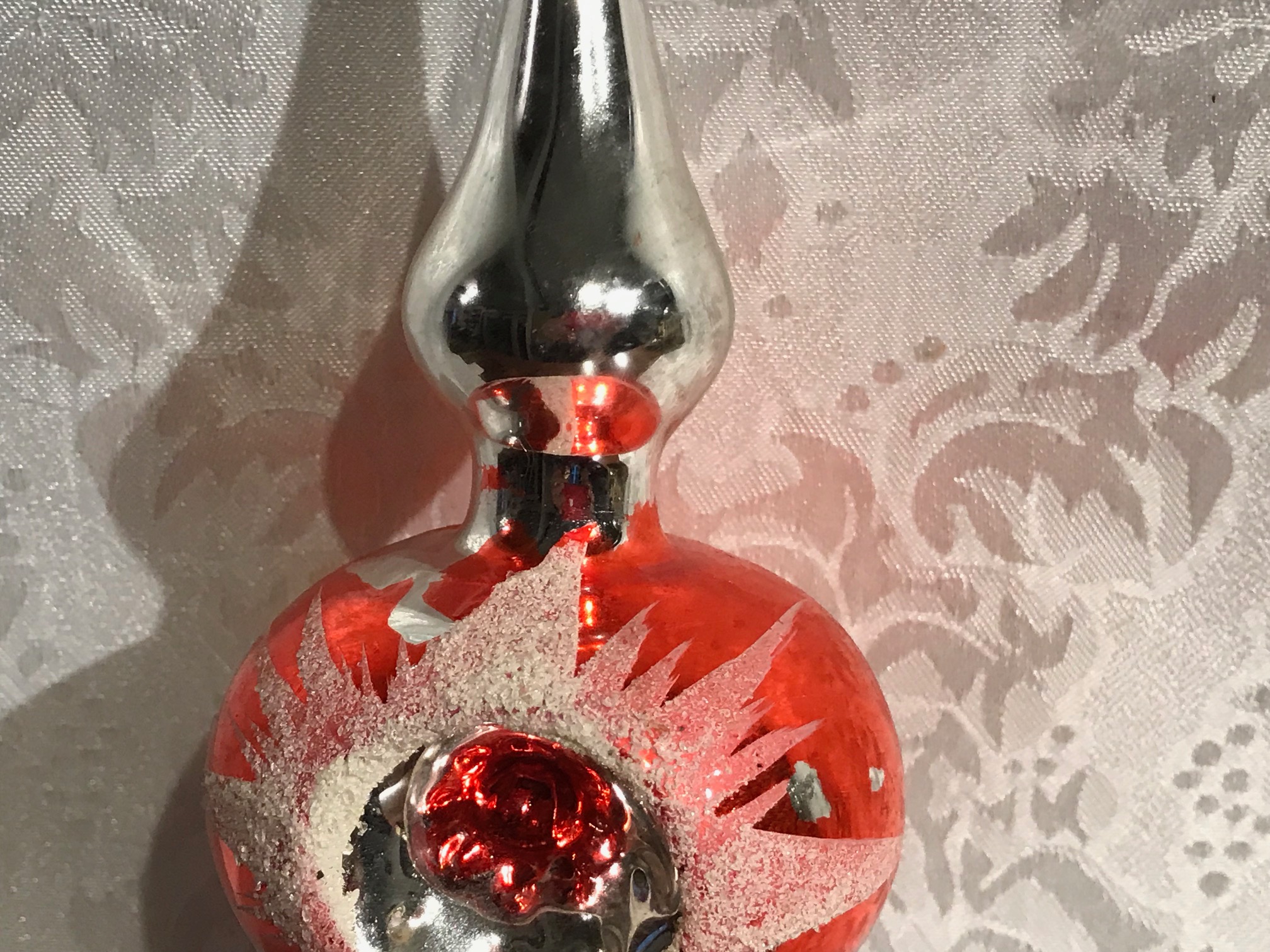
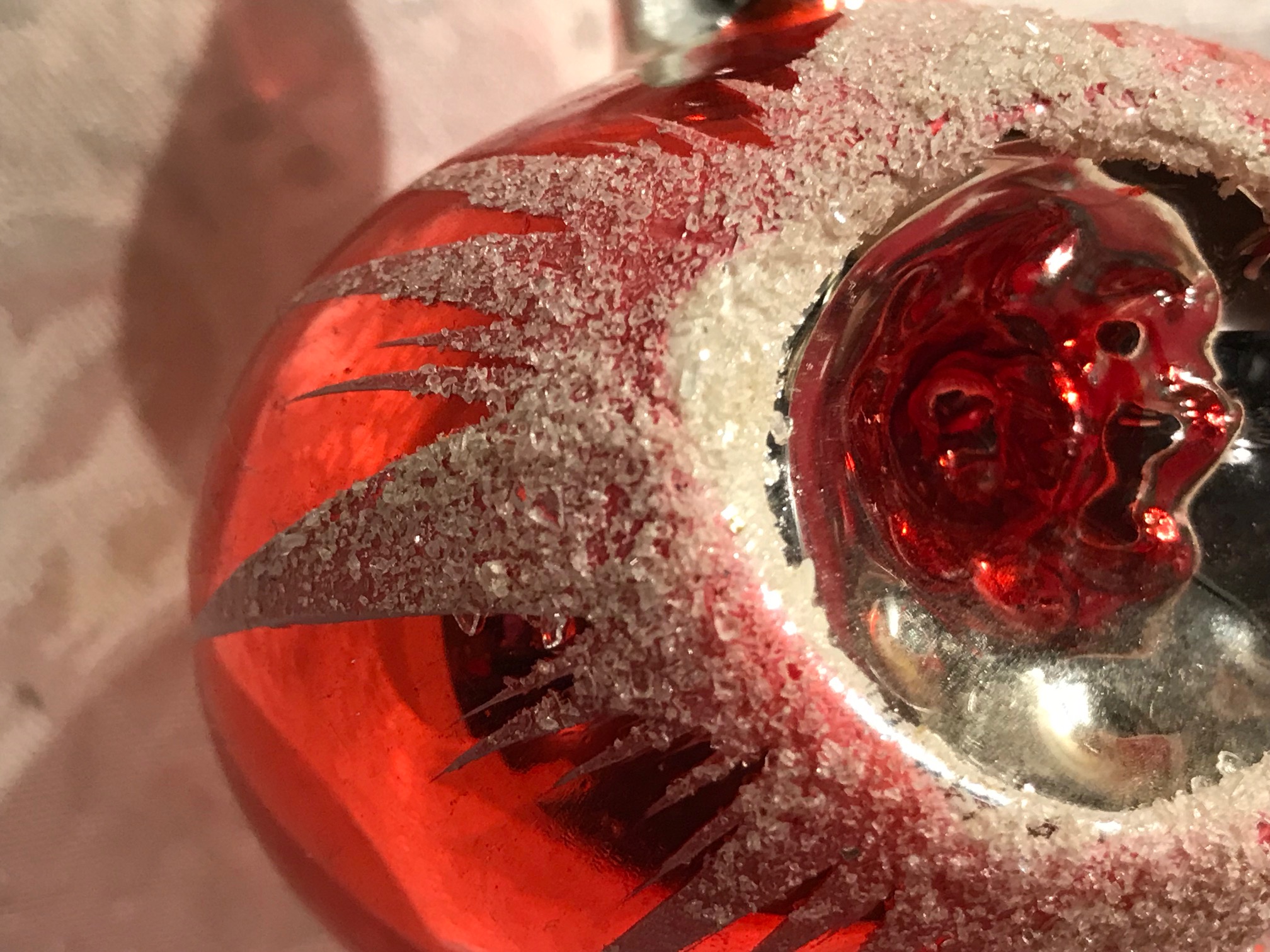 Frosted white component of ornament image above:
Frosted white component of ornament image above: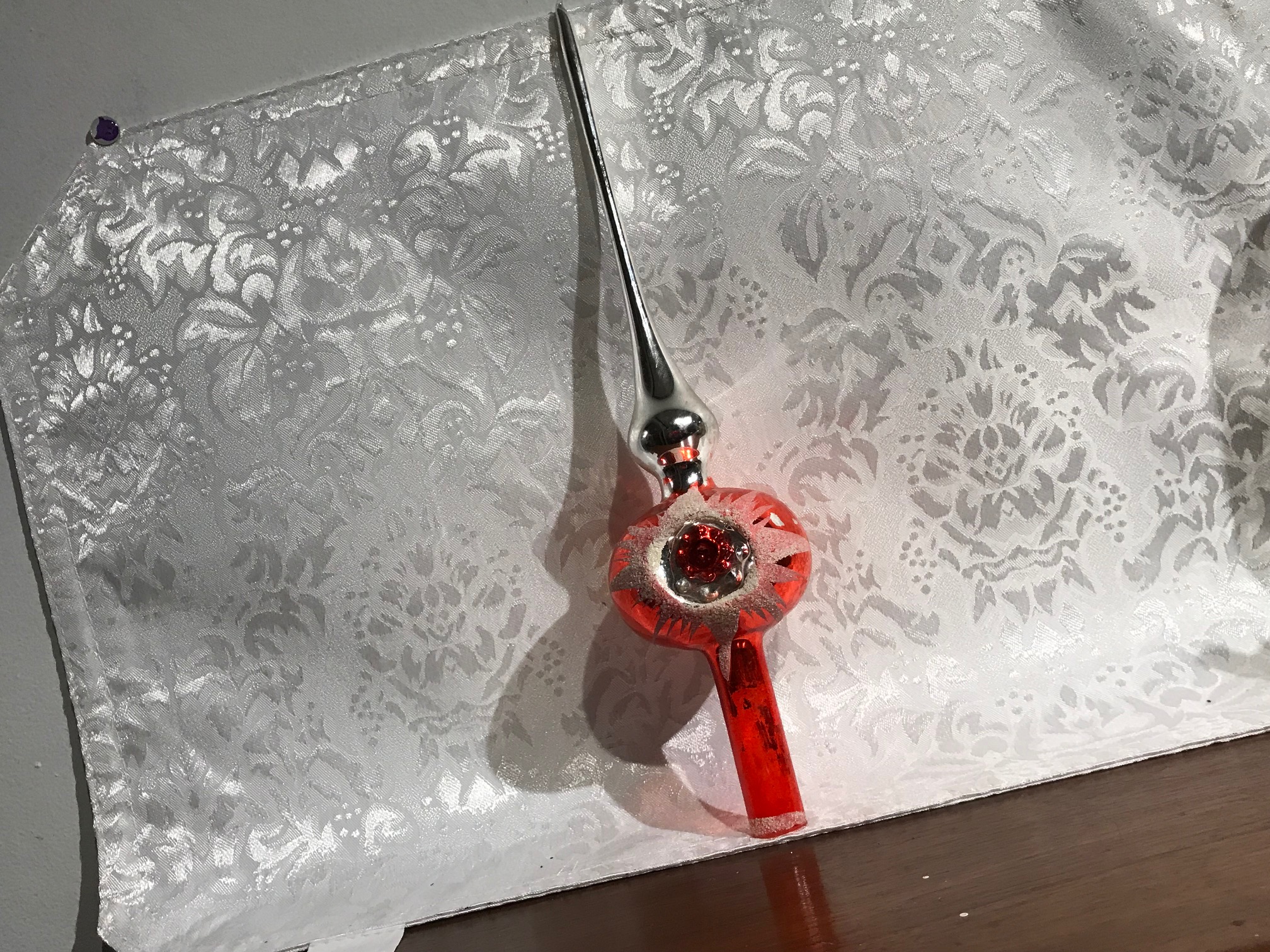

Hi Tamara,
Have you tested any of the rattan Tree toppers that you can find on Amazon? Are there any Christmas lights that are considered leadfree?
So, I’ve inherited my dad’s collection of vintage ornaments, which were his parent’s, from the 1950s and 60s, and which I am certain are Mercury Glass. We grew up with them on the tree, and goodness knows how many were smashed. I can’t even begin to imagine. Certainly concerned now with how many chemicals I was exposed to ask a kid from these alone, and how much arsenic and whatnot is on all the packaging carrying the remaining ornaments that now over in my house. I’m reluctant to get rid of them, but I also don’t want them to be on the tree while my child is little! I have lead swabs, but it’s there any way to check for arsenic and other things at home?